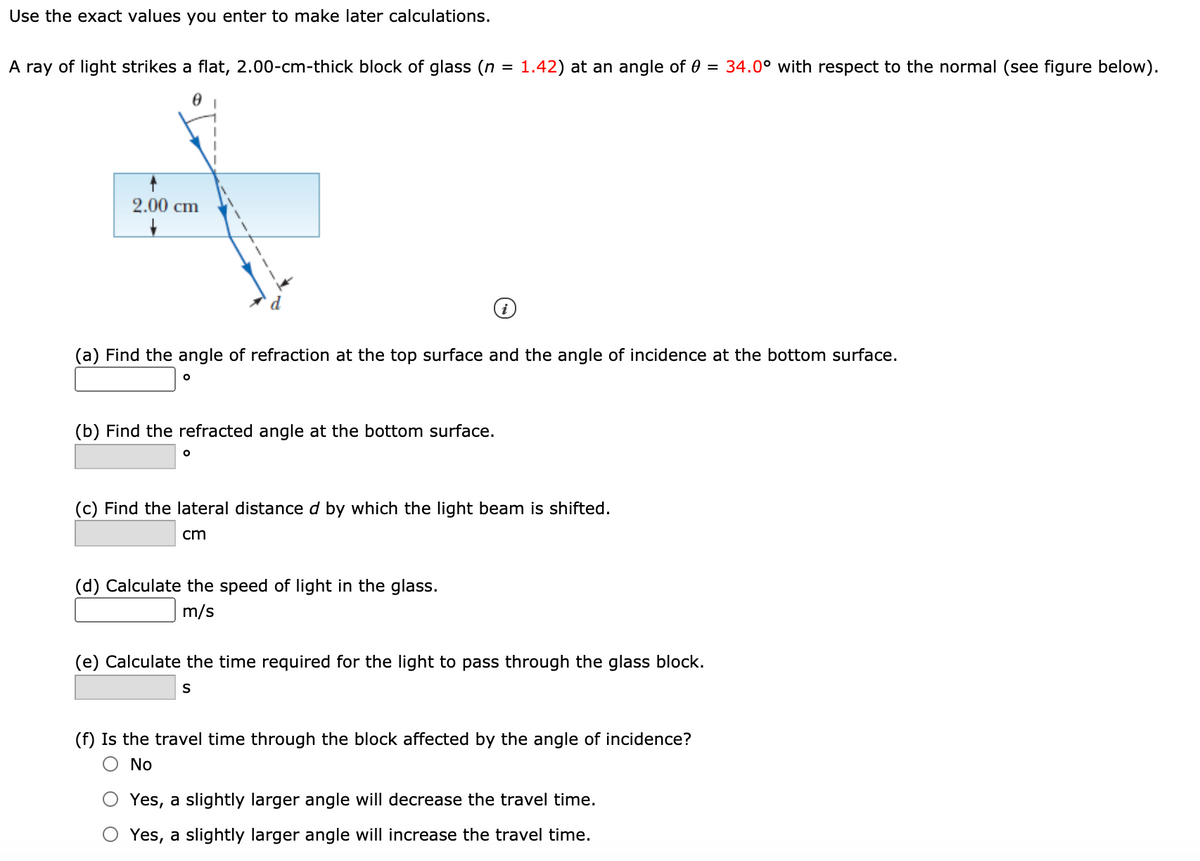A ray of light strikes a flat, 2.00-cm-thick block of glass (n = 1.42) at an angle of 0 = 34.0° with respect to the normal (see figure below). 2.00 cm (a) Find the angle of refraction at the top surface and the angle of incidence at the bottom surface. (b) Find the refracted angle at the bottom surface. (c) Find the lateral distanced by which the light beam is shifted. cm (d) Calculate the speed of light in the glass. m/s (e) Calculate the time required for the light to pass through the glass block. (f) Is the travel time through the block affected by the angle of incidence? O No O Yes, a slightly larger angle will decrease the travel time. O Yes, a slightly larger angle will increase the travel time.
Refraction of Light
Refraction is a change in the direction of light rays when they travel from one medium to another. It is the bending of light when it goes through different media.
Angle of Refraction
Light is considered by many scientists to have dual nature, both particle nature and wave nature. First, Particle nature is one in which we consider a stream of packets of energy called photons. Second, Wave nature is considering light as electromagnetic radiation whereas part of it is perceived by humans. Visible spectrum defined by humans lies in a range of 400 to 700 nm wavelengths.
Index of Refraction of Diamond
Diamond, the world’s hardest naturally occurring material and mineral known, is a solid form of the element carbon. The atoms are arranged in a crystal structure called diamond cubic. They exist in a huge variety of colours. Also, they are one of the best conductors of heat and have a very high melting point.

Trending now
This is a popular solution!
Step by step
Solved in 2 steps with 1 images









